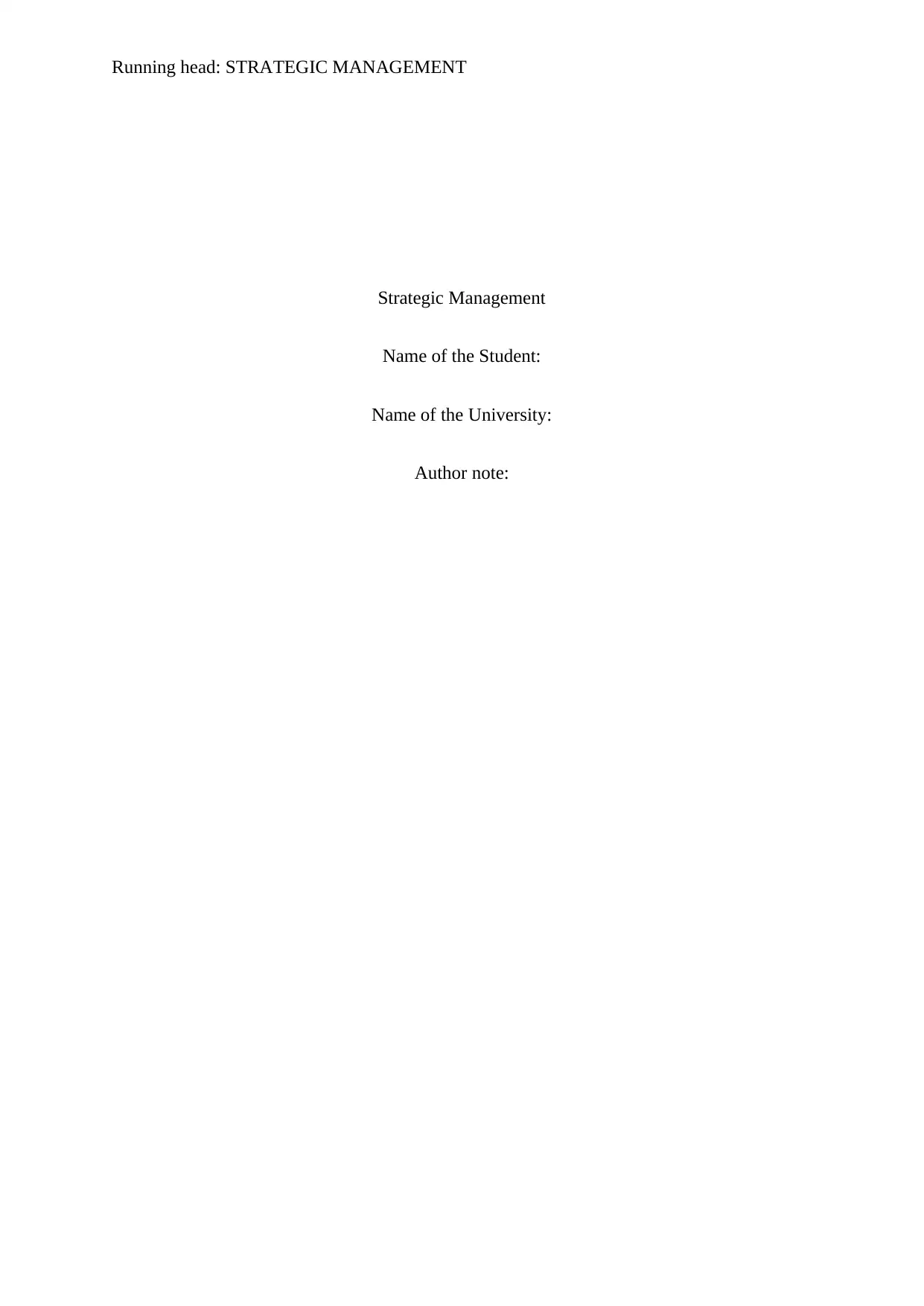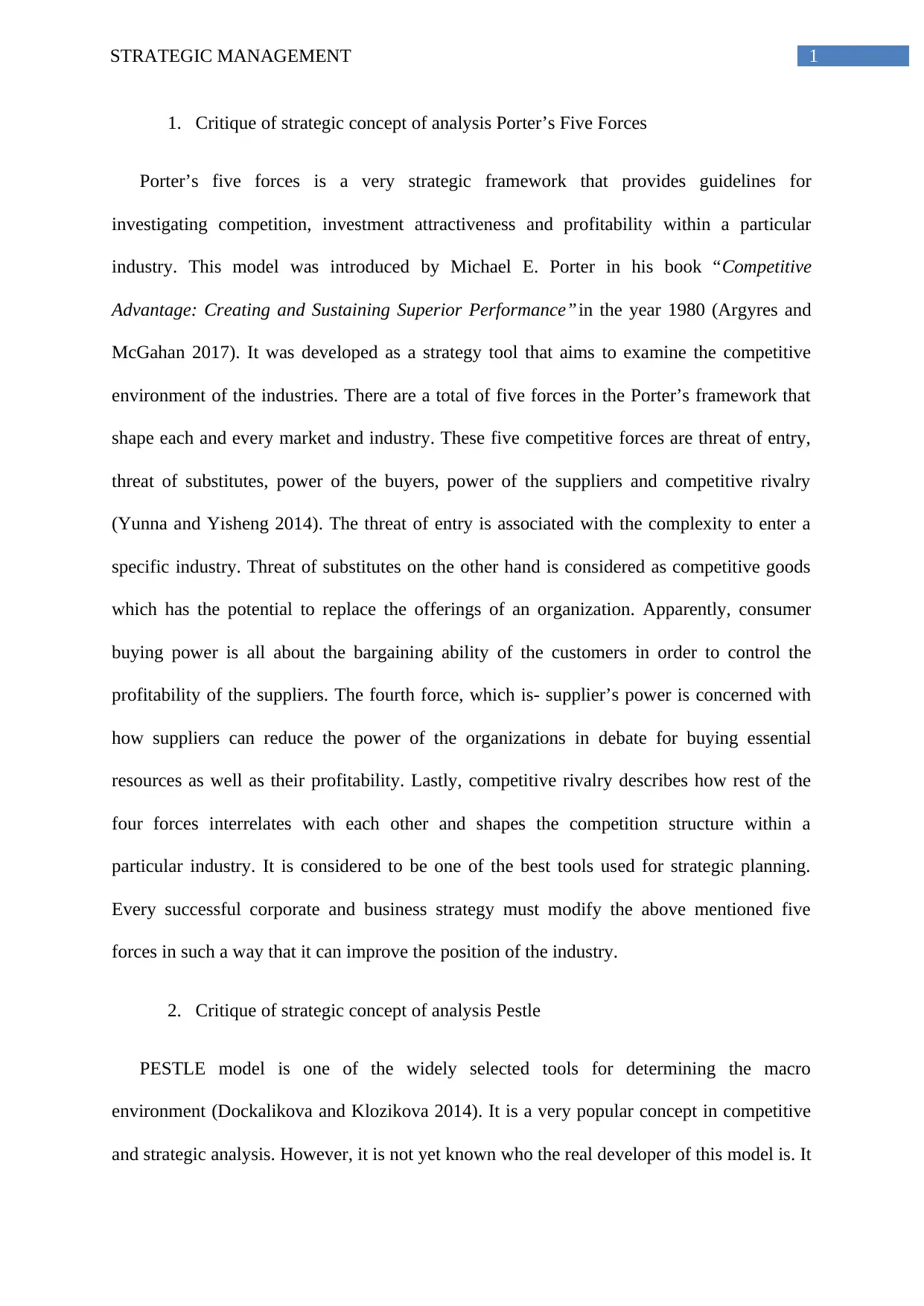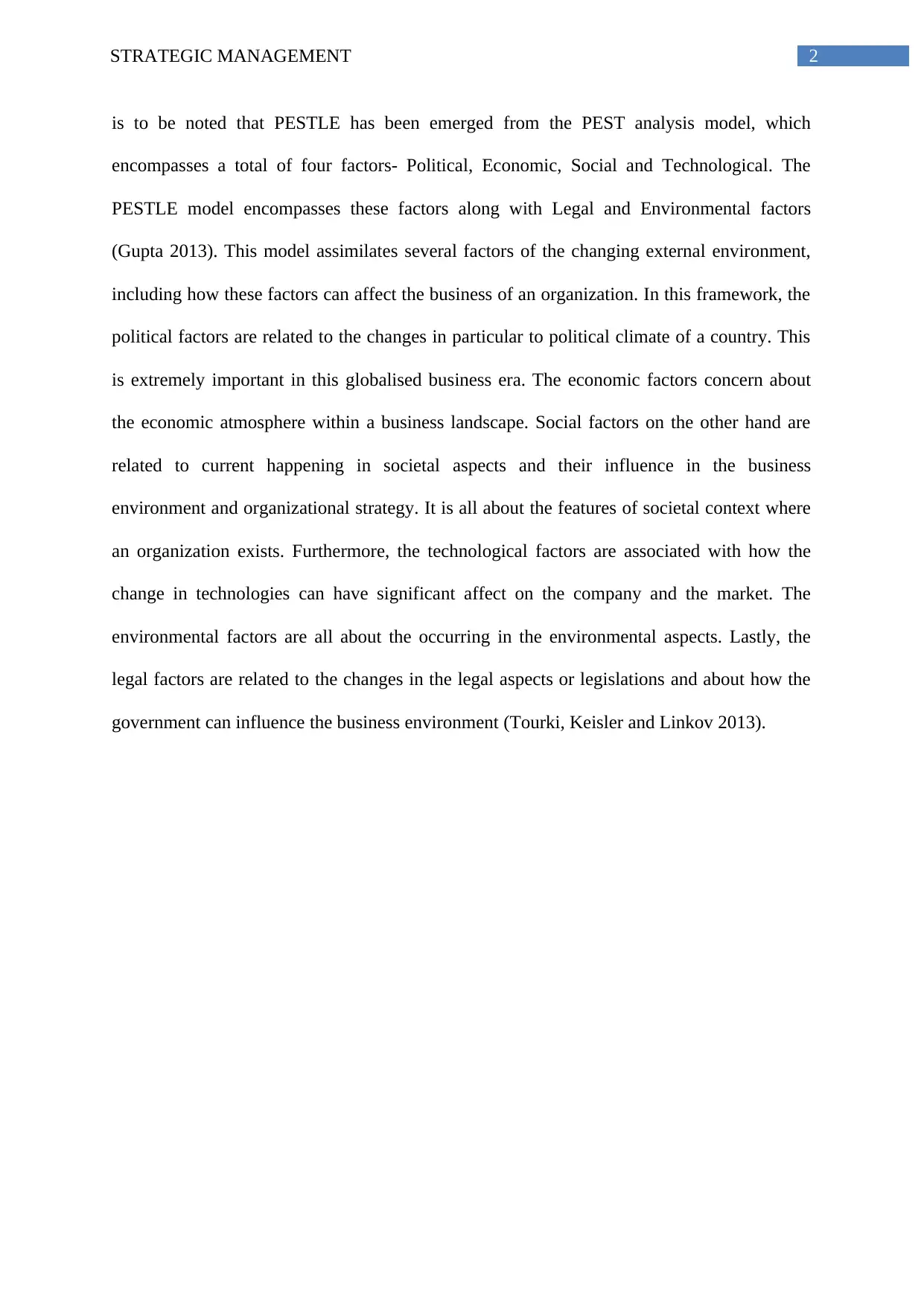Critique of Strategic Concepts: Porter's Five Forces and PESTLE Analysis
VerifiedAdded on 2023/06/14
|4
|807
|296
AI Summary
This article provides a critique of two strategic concepts: Porter's Five Forces and PESTLE Analysis. It discusses the five competitive forces in Porter's framework and the six factors in PESTLE model.
Contribute Materials
Your contribution can guide someone’s learning journey. Share your
documents today.
1 out of 4









![[object Object]](/_next/static/media/star-bottom.7253800d.svg)